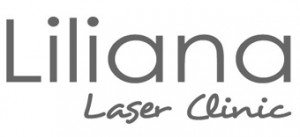What to Expect from Laser Skin Tightening
If you are interested in reducing the appearance of wrinkles and loose skin on your face, a unique option you should consider is laser skin tightening. Laser skin tightening can effectively tighten your skin, dramatically reducing the appearance of wrinkles and giving you a more youthful appearance.
What it is
Laser skin tightening is a process used to tighten skin in a nonsurgical, minimally invasive way. A laser is used to heat the collagen under the surface of the skin, tightening the skin as it contracts. Skin tightening of the face is immediately noticeable. That and the fact that no downtime is needed makes this procedure increasingly popular. For optimal results, patients should receive their laser skin tightening treatments two or three times over a few months. Laser skin tightening has been approved by the FDA as a method for reducing skin laxity, wrinkles, and fine lines. Though patients will not see results that are as dramatic as a facelift can offer, the lower cost makes laser skin tightening a great option.
What to Expect
The patient must remove all substances on their skin before a treatment session, such as sunscreen, oils, and makeup. A topical anesthetic is applied by the practitioner to the area being treated. The patient is also given protective eyewear. Patients who experience discomfort may opt to use over-the-counter pain medications before their treatment.
Treatments for laser skin tightening usually take place in a cosmetic dermatologist’s office. During the procedure, pulses of laser energy are briefly applied to the skin by the practitioner using a handpiece. To help keep the patient comfortable, cool air is continuously blown on the patient’s face. Typically, the practitioner must treat the same area three times to provide optimal results. Depending on the location and size of the treated area, the session can last between 30 minutes and an hour.
With laser skin tightening, the patient can immediately return to their normal daily activities. There are minimal side effects that may include minor swelling, redness, and a warm feeling on the skin. The side effects generally disappear within a few hours.
Is it Painful?
No, it is not painful to have a laser skin tightening treatment. Before the treatment begins, an anesthetic cream is put over the area by the practitioner to help minimize any discomfort the patient may feel. Minor discomfort may be felt by a patient undergoing a skin tightening treatment because of the heat from the laser. The cool blasts emitted from the laser skin tightening handpiece helps to ease any discomfort created by the heat. These blasts of cool air not only help the patient feel more comfortable but can also prevent the outer layer of skin from being burned.
Conclusion
Laser skin tightening is a great method for anyone interested in gaining a more youthful appearance through reducing skin laxity, wrinkles, and fine lines. It is a safe procedure that can be done quickly and comfortably. If you are interested in smoothing over your wrinkles, give us a call today.

